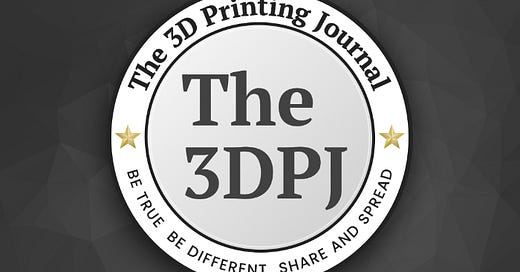Atomic Layer of the Day:
Today, we’re returning to the topic of production planning, which we touched on recently.
Together with nPower Technology, I’ve had a series of insightful meetings with other AM manufacturing companies we collaborate with, during which we presented the nPower Scheduler – a software solution specifically designed for AM production planning. These conversations sparked a number of interesting points and reflections that I’d like to share with you.
One of the most subtle yet fundamental differences between additive manufacturing and traditional production methods lies in the non-linear nature of the AM process.
In conventional industrial manufacturing, each stage follows a predictable path – from raw material to finished product. In AM, however, workflows are dynamic: a variety of parts are often printed simultaneously on a single build plate or within a build chamber, before moving on to various post-processing stages.
In other words, injection molding or thermoforming produces thousands of identical parts, while an SLS 3D printer chamber might contain a thousand entirely different parts in one print run.
Standard ERP and MES systems aren’t equipped to handle this complexity, leading to a range of issues.
One major issue is the lack of post-processing management. Even leading companies developing AM production management software often overlook this. After printing, parts typically require additional steps such as support removal or depowdering, UV curing or heat treatment, grinding or CNC finishing, and even dyeing or chemical smoothing. If the system doesn’t coordinate these steps, production bottlenecks arise that slow down the entire process.
Yet most software lacks this capability (and I emphasize most – not all).
To deal with this, companies typically resort to Excel spreadsheets. There’s even a company in Poland (not one we spoke to) that has been developing its own system for two years – and it still doesn’t work.
Another issue is resource qualification. In industries like aerospace and medical, both machines and operators must meet strict certification requirements. Standard scheduling systems don’t factor this in, which can result in misassigned tasks and quality issues.
Production also demands flexibility. Machine failures, rush orders, and material shortages require rapid schedule adjustments. Not to mention the fail ratio – some parts inevitably fail and need to be reprinted.
Manually updating schedules in response to all this is both time-consuming and error-prone.
What’s missing here is a holistic, integrated approach to production. Everything is segmented, disconnected, and not working in sync.
For example, if a company sets up a fleet of EOS SLS 3D printers and connects them to DyeMansion or a competing AMT PostPro system for post-processing, there will still be an organizational gap between removing parts from the printer and loading them into the post-processing machines – regardless of the configuration.
And let’s not forget: the parts still need to be inspected (quality control), packed, and shipped. And that, too, often happens in isolation from the rest of the process.
Honestly, I’m still surprised that what we’re demonstrating with nPower Technology is considered something new in the industry – rather than just a better alternative to what’s already out there.
There’s no doubt: we need a change in approach to make AM used more in real industrial enviroment.
Atomic Layer from the Past:
04-17-2024: Formlabs presented the new generation of its flagship 3D printers – the Form 4 series.
News & Gossip:
Yesterday, I mentioned the new CONTEXT report and its findings about the drastically declining sales levels of 3D printers. I also said I would take a closer look at it—which I did. Based solely on the press releases from this and the previously published report, I can already see that the results and conclusions contradict each other. Yesterday they wrote: "Despite a −25% YoY drop, Creality was the leader with a 40% share of the market, with Bambu Lab following at 20% with a quarterly rise of +76%." Meanwhile, in the report for Q2 2024, it was stated that Bambu Lab held 41% of the market and Creality 32.4%. So what’s going on here? How can a company lose -20% of its market share in a year while recording a quarterly growth of +76%? I don’t want to dig into this any further. I’d have to buy their report to understand it. But I won’t.
Sloyd has launched version 2.0 of its web-based 3D design platform, enhancing workflows for developers, artists, and 3D printing enthusiasts. The update adds STL export, image-to-3D generation, AI-powered texturing, and faster performance. Users can now create and customize printable models directly in the browser—without traditional CAD software.
Fictiv is being acquired by Japan’s MISUMI Group in a $350M all-cash deal. The move combines Fictiv’s AI-driven digital supply chain with MISUMI’s vast catalog of components. Fictiv aims to scale faster globally, enhancing its manufacturing services across 3D printing, CNC machining, injection molding, and more.






Great Article, Pawel.